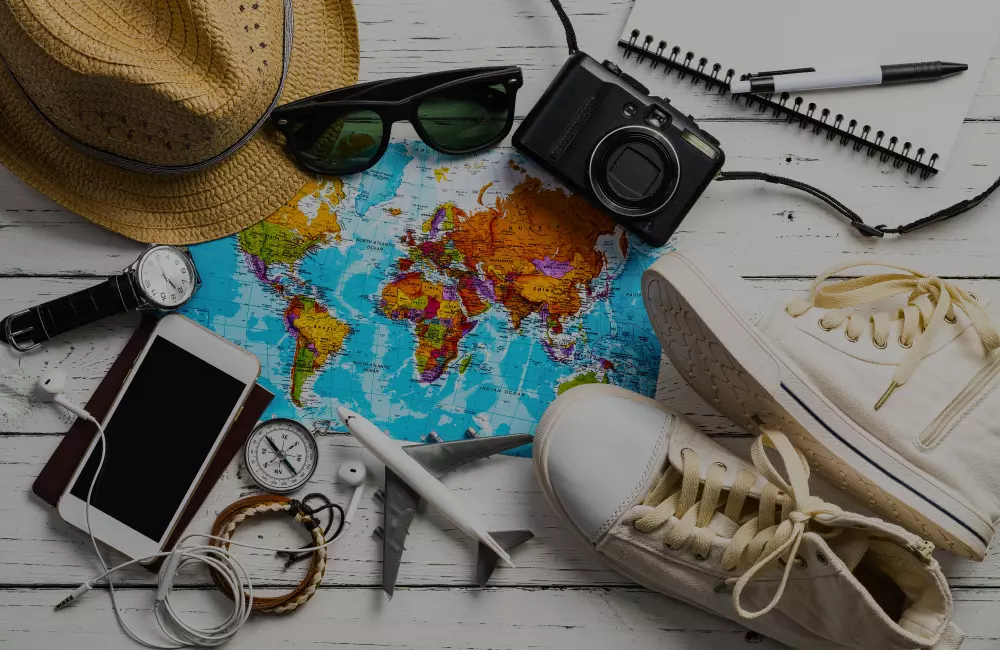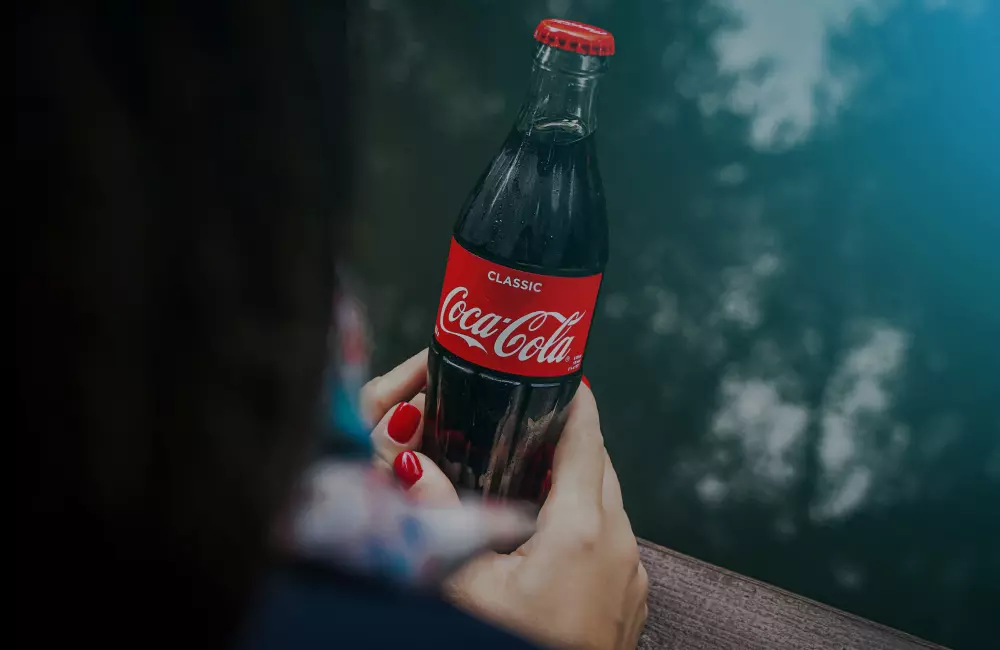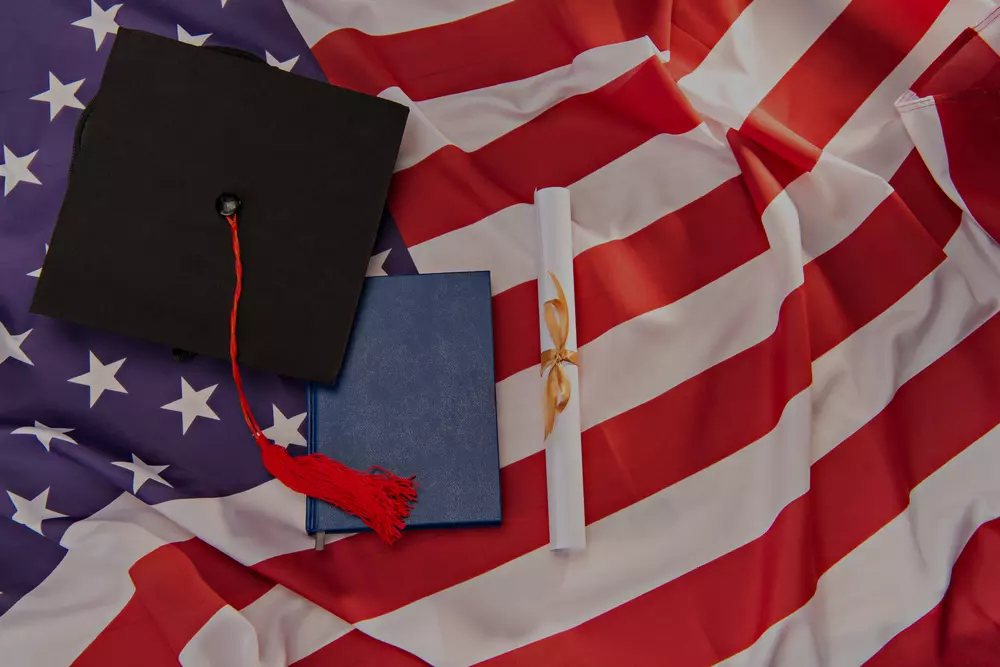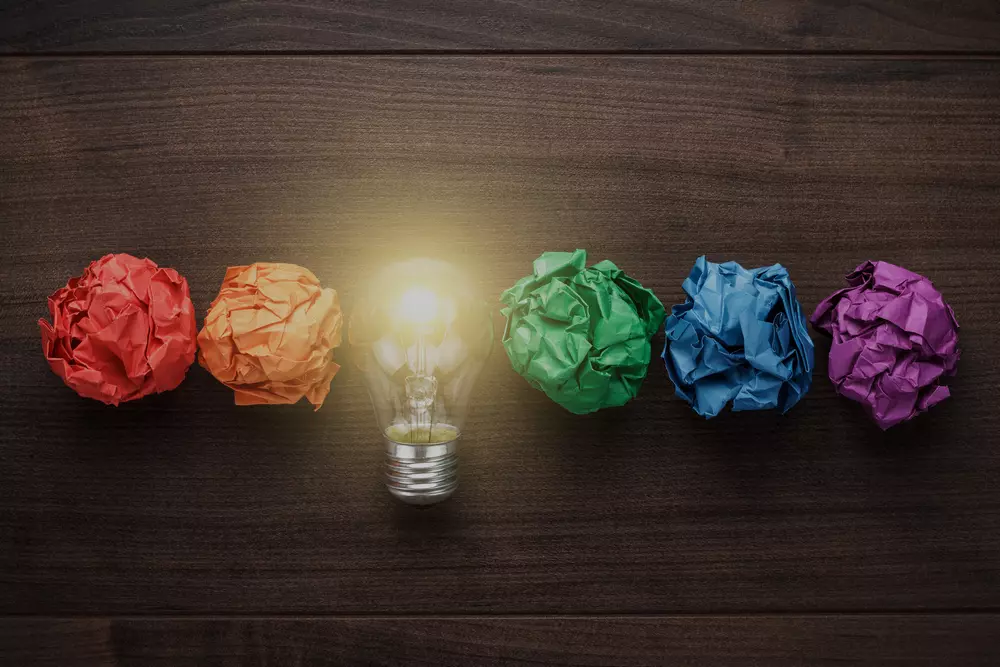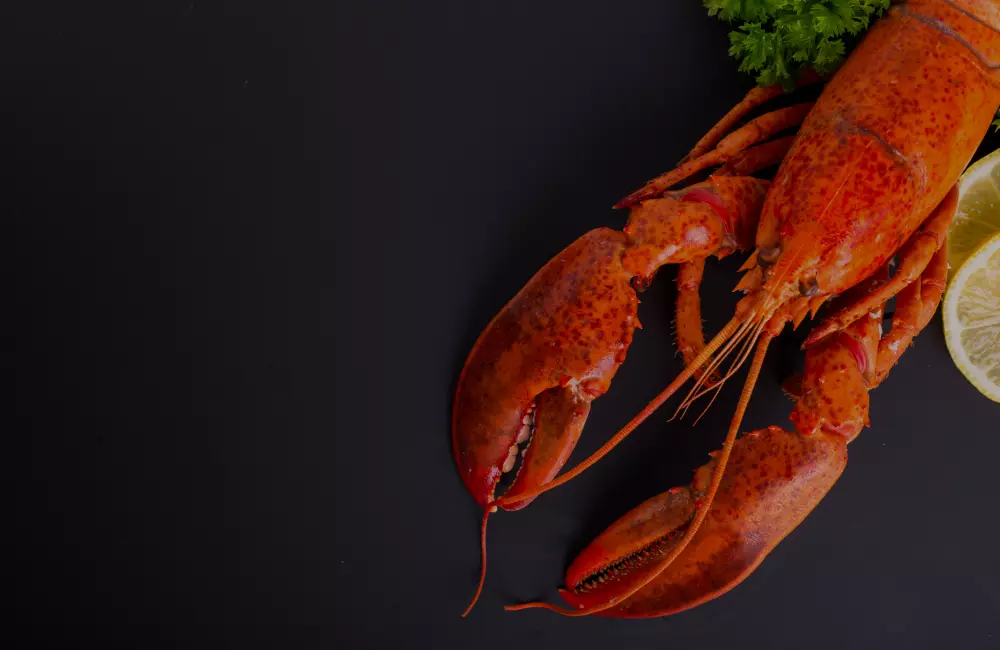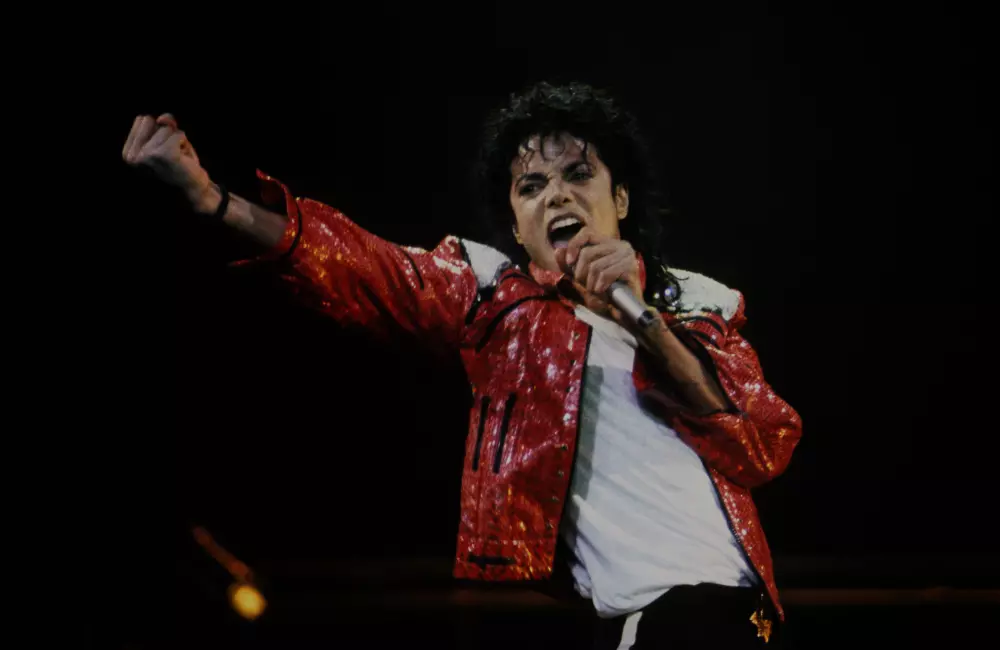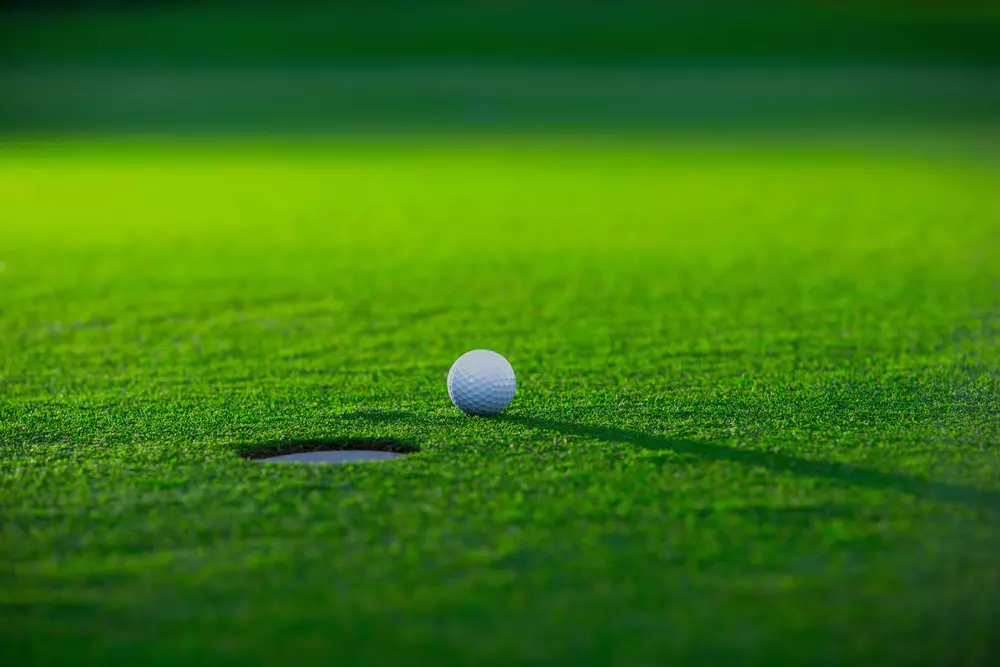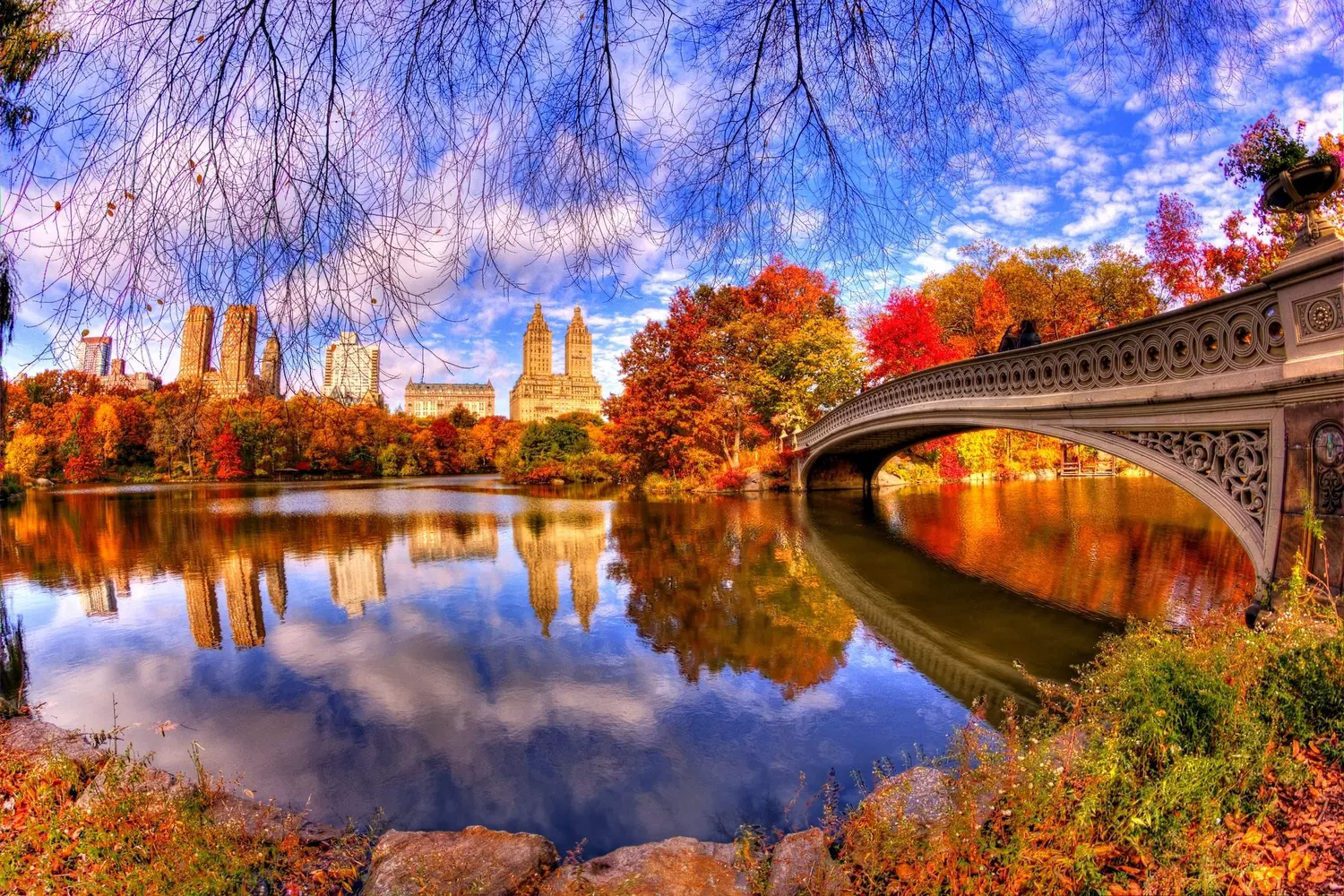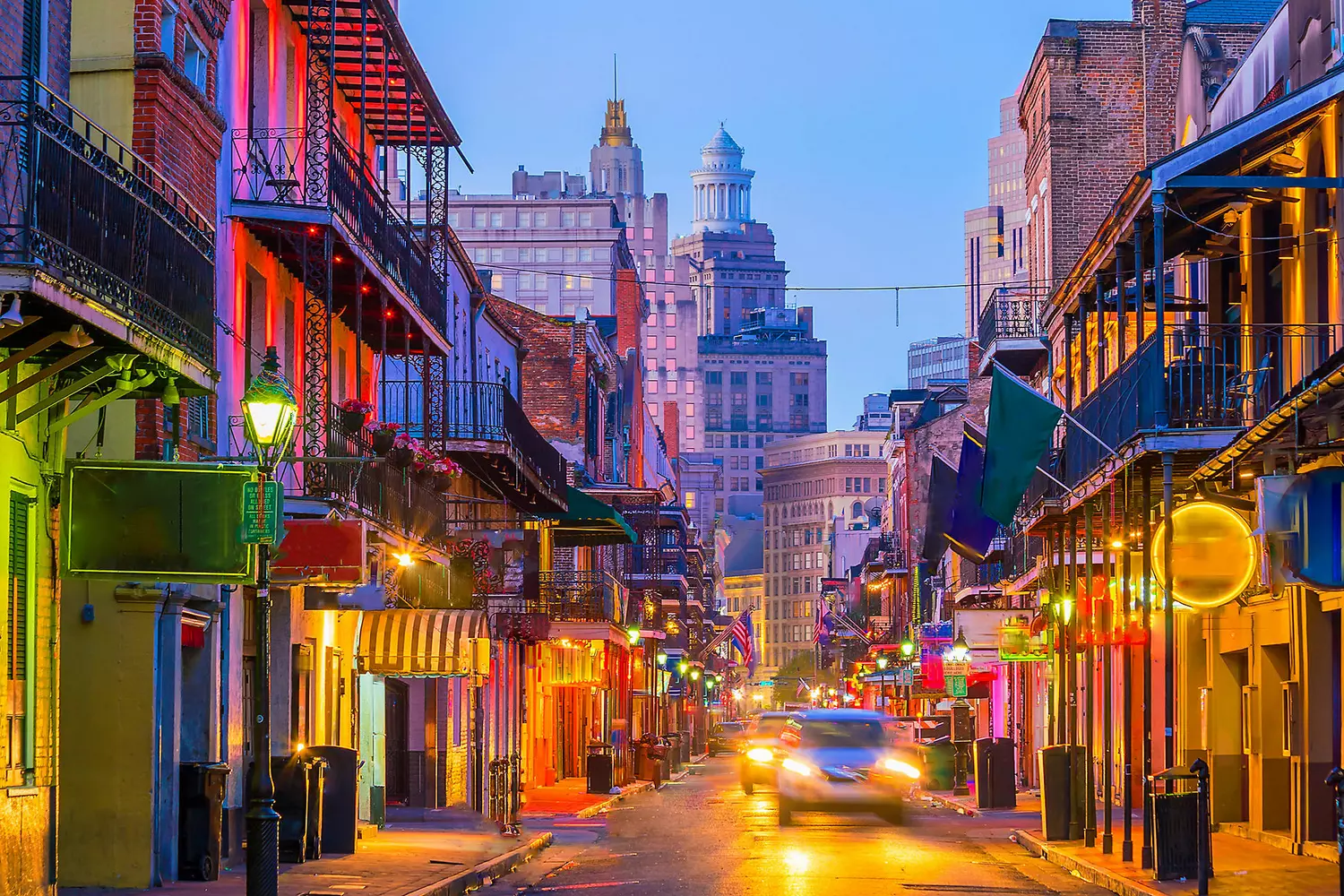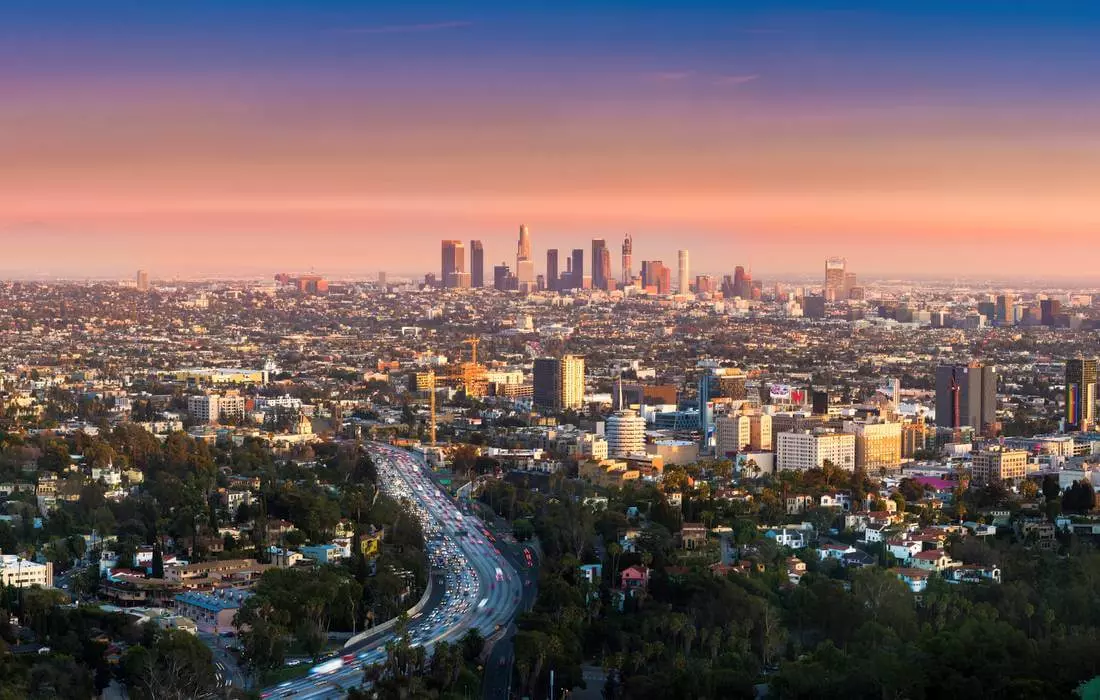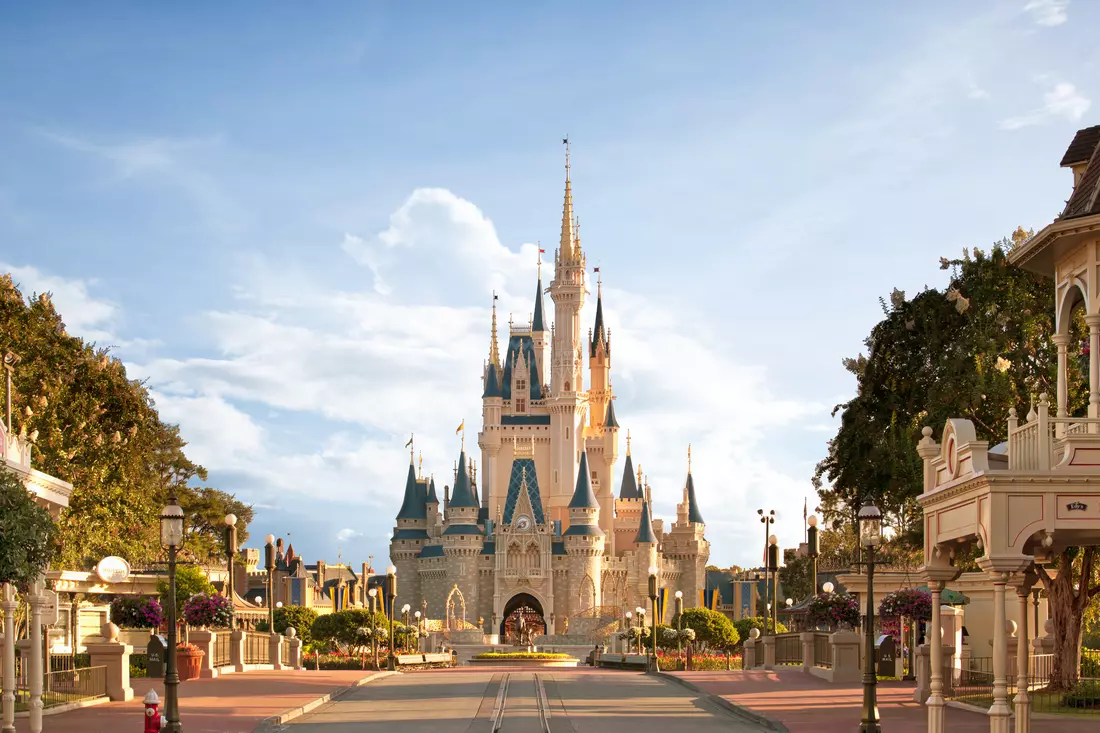There are places that seem as if nature itself created them for us to fall in love with. One of these places is Hawaii. It’s not just islands in the Pacific Ocean; it’s a special state of mind. For most people, Hawaii is like an Instagram postcard: pristine beaches, turquoise ocean, girls wearing flower leis, and surfing against the backdrop of a sunset. But behind these images lies a whole universe with its own history, culture, and character.
Everyone who has ever been here says the same thing: life in Hawaii feels different. Time slows down, worries vanish, and simple joys become the most important. Here, people smile not out of habit, but from the heart. They greet each other with the word “Aloha”, which means not only “hello” but also “love,” “happiness,” and “kindness.” It’s a philosophy that permeates life on the islands.
Hawaii is a combination of contrasts:
- Ancient volcanoes and ultramodern cities;
- Quiet bays and bustling beaches;
- The culture of the native people and the pace of American metropolitan life;
- Jungles hiding waterfalls and the skyscrapers of Honolulu.
Traveling to Hawaii is not just a vacation. It’s an opportunity to live a small new life, where every day is full of discoveries: morning surfing in the ocean, a hike to the crater of an active volcano, dinner accompanied by the sounds of a ukulele, and a hula dance under the open sky.
Here, it’s easy to believe in miracles: in the legends of the goddess Pele who guards the volcanoes; in the stories of ancient navigators who crossed the ocean by the stars; in the idea that humans can truly live in harmony with nature.
Hawaii is a place where past and present blend into a single rhythm, and nature itself seems to invite us into a dialogue. People come here to feel freedom, experience a different culture, catch a wave, or simply find themselves.

"Hawaii is where time seems to pause, inviting you to just breathe. The air is fragrant with flowers, and the ocean murmurs tales as old as the islands themselves." — Jack London
Hawaii: From Myths and Kings to the 50th State of the USA
Hawaii is not just about paradise beaches and surfing; it’s also a remarkable history where ancient myths, royal dynasties, and global politics intertwine. On one step, you can hear the legend of the goddess of volcanoes, and on the next, see the American flag proudly flying above modern skyscrapers. All of this comes together in a fascinating harmony.
- 01. The Era of Legends: When Gods Walked Among People
The first settlers arrived in Hawaii roughly 1,500 years ago. They were brave Polynesians who crossed thousands of kilometers of ocean in simple canoes. Their navigation relied not on maps but on the stars, ocean currents, and observations of birds. They brought with them language, culture, and a philosophy where humans were always part of nature. Yet, reality was inseparable from myth.
- The main guardian of the islands was considered Pele — the goddess of fire and volcanoes. For the locals, her power was not destructive but sacred. Every eruption was seen as an expression of the goddess’s will rather than a disaster.
- There is still a belief: one must not take stones or sand from Hawaii. It is thought that doing so will bring Pele’s wrath. Tourist offices annually receive packages from travelers returning “souvenirs” home, convinced that their misfortunes were caused by taking them.
- 02. The Kingdom of Hawaii: East Meets West
By the 19th century, Hawaii had become a full-fledged kingdom with its own monarchy. The most famous ruler was King Kamehameha I, who united all the islands under one rule for the first time. Thanks to him, Hawaii became a strong and independent nation, and his name is still spoken with respect.
In the heart of Honolulu stands Iolani Palace — the only royal palace in the United States. Built in the late 19th century, it impresses with a mix of European architecture and local character. Stepping inside feels like being in Vienna or Paris, yet outside the windows, the tropical ocean roars, and modern skyscrapers rise nearby. - 03. The Path to America: Lost Independence
The end of the 19th century was a turning point. Hawaii’s strategic location made it a coveted prize for the United States and European powers. In 1893, American businessmen and military forces organized a coup, overthrowing the last queen, Liliuokalani.
In 1898, the islands were officially annexed by the United States, and in 1959, they became the 50th state of America. This decision still sparks debate: some locals feel their sovereignty was taken by force.
Today, in Honolulu and other cities, rallies and cultural festivals often raise the issue of independence and the preservation of the Hawaiian language. For many residents, it is important not to be absorbed into American culture but to maintain their unique identity.
For travelers, exploring Hawaii’s history is not a dry chronology but part of the islands’ atmosphere. You can walk through the halls of Iolani Palace, hear legends of Pele at the Kilauea volcano crater, attend a hula festival, or listen to Hawaiian chants in a local church.
Hawaii teaches a simple truth: the past is always near; it shapes the present.

Hawaii on the Map: The Geography of Paradise Islands
Hawaii is not just a group of islands in the middle of the Pacific Ocean. It is a unique archipelago born from the magic of nature, where land, water, and air merge in perfect harmony. Understanding Hawaii’s geography helps to fully appreciate its diversity, beauty, and uniqueness.
- 01. The Archipelago in the Ocean
Hawaii consists of eight main islands, arranged in a long arc stretching nearly 2,400 kilometers. Each island is unique, from large volcanic masses to tiny uninhabited spots on the map. The main islands are:
- Hawai’i (Big Island)
The largest and geologically youngest island. It is home to the active volcanoes Mauna Loa and Kīlauea. The landscape is ever-changing: lava fields, craters, and tropical forests coexist with beaches. - Maui
Known for its scenic valleys, beaches, and cliffs. Home to the famous Kaanapali beach and Haleakalā National Park. - Oahu
The city-island of Honolulu, the cultural and economic center of the archipelago. Here you’ll find the legendary Waikīkī beach and historic sites, including Pearl Harbor. - Kauai
The “Garden Isle”. Lush jungles, waterfalls, narrow trails, and deep canyons make it perfect for hiking. - Molokai
An island with pristine nature and rich native culture. Few tourists visit, but traditional life thrives. - Lana’i
A small island known as the “Pineapple Island”. It offers secluded beaches and rugged landscapes. - Niʻihau
The “Forbidden Island”. Private lands, restricted access, almost no tourists. - Kahoʻolawe
An uninhabited island, formerly used for military purposes. Today it is protected as a natural and historical reserve.
- 02. Volcanic Origins
All Hawaiian islands have volcanic origins. They formed millions of years ago due to a hotspot in the Earth’s crust — a so-called mantle plume. Lava rose from deep within the planet, cooled, and created the islands.
- The youngest island is the Big Island. Its land is still “alive”: lava fields continue to expand, and the volcanoes erupt almost annually.
- The oldest is Kauai. Its cliffs and canyons formed millions of years ago, and today the island is covered with dense vegetation.
- 03. Climate Zones and Landscapes
Hawaii amazes with its variety of climates and landscapes. On a single island, you can find:
- Dry and hot beaches with white or black sand.
- Wet tropical forests, home to giant ferns and trees as wide as a person.
- Mountain peaks shrouded in clouds, where temperatures can approach freezing.
- Volcanic fields, where the ground is still warm and the scent of stone fills the air.
This geographical diversity makes Hawaii unique not only among Pacific islands but among all places on Earth.
- 04. Water and the Ocean
The ocean surrounds all the islands and shapes their climate. The northern sides usually have colder waters and stronger waves — a paradise for surfers. The southern sides are warmer and calmer, ideal for swimming and diving. Additionally, islands are separated by channels and lagoons, creating scenic bays and natural harbors. For example:
- Hanauma Bay on Oahu — a natural lagoon with rich underwater flora.
- Kalaupapa Lagoon on Maui — a popular spot for kayaking and snorkeling.
- 05. Geography and Culture
Hawaii’s geography directly influences the lives and traditions of its people. Traditional Polynesian settlements were built to take advantage of the sun, water, and protection from wind. Many villages still preserve this principle, blending respect for nature with modern comfort.
Fun fact: if you stack all the volcanoes on the Big Island by height, Mauna Loa would be taller than Mount Everest when measured from the ocean floor!
Hawaii’s geography is more than maps and numbers. It is a living, breathing system where every island is unique, every landscape tells its own story, and nature seems to invite adventure.

Hawaiian Islands: What Makes Each One Unique
Many people think of Hawaii as just one big island with palm trees and sand. In reality, the archipelago includes over a hundred islands, but only eight are inhabited and accessible for travel. Each island is like a separate country, with its own climate, landscapes, character, and history. Understanding these differences helps plan the perfect trip and fully experience the unique atmosphere of each place.
- 01. Oahu — the Heart of Hawaii
Oahu is called the heart of the archipelago — and for good reason. It is home to the state capital Honolulu, the famous Waikīkī beach, and the historic Pearl Harbor, where the history of World War II comes alive.
- City and Beach
Oahu is perfect for those who want to combine city life with beach relaxation. Morning surfing at Waikīkī, daytime museum and gallery visits, and evening bars and open-air concerts. - Events and Culture
Oahu is the center of festivals and sports events. Local celebrations blend native traditions with modern entertainment.
Fun fact: Oahu is called the “Collection of Hawaii” because it intersects all major cultural and tourist routes of the archipelago.
- 02. Maui — the Island of Romantics
If you dream of a honeymoon or a quiet getaway for two, Maui is the best choice. It enchants with its nature and atmosphere:
- Hana Road
A scenic route along the coast with jungles, waterfalls, and lookout points, each turn postcard-perfect. - Whale Watching
From December to April, humpback whales gather here. Watching them glide smoothly across the ocean is one of the most impressive natural spectacles. - Romantic Atmosphere
Secluded beaches and calm resorts create ideal conditions for couples.
- 03. Big Island (Hawai’i) — the Island of Volcanoes
If you want to feel the power of nature in all its force, head to the Big Island. It is the largest island of the archipelago, where the past and present of the land can literally be felt underfoot.
- Volcanoes
Hawai’i Volcanoes National Park is where you can see lava flowing into the ocean. Every stone here breathes the history of the planet. - Landscape Diversity
Black lava fields coexist with tropical forests and white sandy beaches. - Active Adventures
Hiking through craters, visiting active volcanoes, and stargazing — each day becomes a small adventure.
- 04. Kauai — the Green Island
Kauai is often called the “Garden Isle”. With fewer tourists and more nature, every corner breathes peace and harmony.
- Natural Attractions
Waimea Canyon — the Grand Canyon of the Pacific, and the Na Pali Coast — scenic cliffs, water, and beaches. - Film and Legends
Scenes from Jurassic Park and other famous films were shot here. - Peaceful Retreat
Perfect for hiking, boat trips, and nature watching.
- 05. Lana’i — the Island of Seclusion
Lana’i is for those seeking quiet and luxury away from crowds. Formerly a large pineapple plantation, today it boasts luxury resorts and untouched nature.
- Tranquility
Ideal for relaxation and meditation, walking along deserted beaches and quiet bays. - Luxury Retreat
A limited number of hotels and high-end services make Lana’i an island for the select few.
- 06. Molokai — the Island of Traditions
Molokai is a true “treasure” of Hawaiian culture. There are no bustling resorts or crowds of tourists, but traditional villages and rituals have been preserved.
- Authentic Hawaii
This is the place to experience the life of native residents without commercialization. - Nature and History
Vast beaches, historic sites, and reserves allow visitors to connect with the island’s culture.
Fun fact: In Hawaii, billboards along roads are prohibited. This helps preserve the natural scenery, allowing tourists to enjoy the landscape without distractions.
Each Hawaiian island is a world of its own. Understanding their unique features helps plan the perfect itinerary, allowing you to experience the full beauty of the archipelago and discover its distinctive character.

Hawaii’s Natural Wonders: Volcanoes, Beaches, and Lush Jungles
Nature is the main reason millions of tourists flock to Hawaii. Here, you can witness the Earth in its pristine form: volcanic fields still hot from yesterday’s lava flows, waterfalls plunging hundreds of meters, and tropical forests where leaves grow as tall as a person. Each island is its own ecosystem, and every walk becomes a true adventure.
- 01. Volcanoes: the Breath of the Planet
Hawaii is one of the most active volcanic regions in the world. On the Big Island, you can still see steam rising from craters and rivers of lava slowly flowing into the ocean, forming new land. Hawai’i Volcanoes National Park allows you to literally walk on newly formed surfaces and feel the planet’s heat and power beneath your feet.
- Kīlauea
One of the most active volcanoes on the planet. Its eruptions attract scientists, photographers, and tourists from around the world. - Mauna Loa
The largest volcano by volume on Earth. Its summit seems to reach the sky, while lava fields stretch into the clouds. - Mauna Kea
A sacred mountain for locals. It hosts some of the world’s largest astronomical observatories, and in winter, you can ski while below, at the ocean, tourists sunbathe on the beach.
- 02. Tropical Jungles and Waterfalls
On Kauai and Maui, real tropical jungles await. Trails wind through vines and towering trees, sunlight barely penetrates the dense green canopy, and the air is filled with the scent of tropical plants. Especially notable are the waterfalls:
- Hanauma (Maui)
A multi-tiered waterfall, perfect for photography and walks. - Wailua (Kauai)
One of the most famous waterfalls of the archipelago, often featured on postcards and posters. - Akaka Falls (Big Island)
A waterfall over 130 meters high, impressive in its power and beauty.
Walking through the jungle and hiking to the waterfalls becomes a small adventure: trails intersect with streams, and every tree and vine seems to hold secrets of ancient legends.
Fun fact: Hawaii has no snakes. Their import is strictly prohibited to protect the ecosystem, allowing tourists to safely explore the jungles and enjoy nature.
- 03. Climate and Best Time to Visit
One of Hawaii’s greatest advantages is its year-round mild climate. There is no typical winter or summer — the air is always warm, and ocean water is almost always +25 °C.
- Winter (November — March)
Slightly cooler, more rain, but this is when surfers arrive — the waves reach massive heights. - Summer (April — October)
A drier season, calm ocean, perfect for swimming, snorkeling, and diving.
The best months for tourists are April, May, September, and October. During these months, there are fewer crowds, mild weather, and moderate accommodation prices.
Hawaii’s nature is a true harmony of contrasts: from the icy snows on Mauna Kea’s peaks to the scorching lava fields of the Big Island, from the wild jungles of Kauai to the white sands of Waikīkī. Every walk here is a small journey into a wonder that is impossible to forget.

Hawaiian Flora and Fauna: Untamed Island Beauty
Hawaii is not just beaches, volcanoes, and jungles. It is a unique ecosystem where nature evolved in isolation, creating species found nowhere else on Earth. Every bush, tree, bird, or marine creature here is the result of millions of years of evolution. Exploring the archipelago’s flora and fauna is like touching the living history of our planet.
- 01. Plant Life: the Islands’ Green Wealth
The Hawaiian Islands are a paradise for botanists and nature lovers. The diversity of plants is astonishing: from tiny orchids to trees covering entire mountainsides.
- Tropical Forests
On Kauai and Maui, you can find tree ferns up to 20 meters tall, vines, and dense undergrowth where sunlight barely penetrates. - Unique Plants
About 90% of Hawaii’s flora is endemic — found only here. Among them are the giant Titipu, Hawaiian orchids, and the rare ‘Ōhi‘a shrub, with bright red flowers considered sacred in Hawaiian mythology. - Palms and Beach Vegetation
Coconut palms, giant banana trees, and flowering hibiscus create the tropical paradise image familiar to tourists.
Fun fact: The ‘Ōhi‘a flower (‘ohia lehua) is linked to the legend of the goddess Pele. It is believed that picking the flower could trigger volcanic eruptions — though it’s just a beautiful tradition, locals still hold to its symbolic power.
- 03. Animal Life: the Islands’ Unique Inhabitants
The isolation of Hawaii has led to the emergence of amazing animals found nowhere else.
- Birds
Hawaii is home to endemic birds, such as the red-breasted Hawaiian honeycreeper, the ‘I‘iwi, and the rare Hawaiian goose (nēnē), a symbol of the islands. These species are protected, and spotting them in the wild is a real privilege. - Marine Life
The waters around the islands are home to sea turtles (honu), dolphins, sharks, and a variety of tropical fish. Colorful reef fish are particularly popular for snorkeling and diving. - Rare Animals
The islands are home to the Hawaiian tree snail (achatinella), listed in the Red Book. These tiny creatures may seem insignificant but play a crucial role in the ecosystem.
Fun fact: Sea turtles often return to the very beaches where they were born to lay their eggs. Tourists witnessing this call it “living magic of nature.”
- 04. Conservation: Protecting the Ecosystem
Hawaii’s flora and fauna face serious threats:
- Invasive Species
Introduced plants and animals can displace native species. - Tourism and Urbanization
Resort development and road construction often threaten natural areas. - Climate Change
Rising temperatures and sea levels affect coral reefs and beaches.
To preserve the islands’ uniqueness, Hawaii has established numerous reserves and national parks that protect rare plants and animals. Visitors can explore these areas while following rules: do not touch animals, collect plants, or leave litter.
- 05. Flora and Fauna in the Tourist Experience
Hawaii’s nature is not just for scientists and researchers. It makes every trip vivid and unforgettable:
- Jungles and Waterfalls
Hiking routes on Maui and Kauai allow you to see rare plants and hear the songs of endemic birds. - Snorkeling and Diving
Observing coral reefs and marine life becomes a real adventure. - Photo Tours
The contrast of green forests, volcanic fields, and ocean landscapes creates shots that stay in memory for a lifetime.
Fun fact: Over 25% of all endemic Hawaiian plants are at risk of extinction. Every encounter with a rare species is a small miracle tourists can witness firsthand.
The flora and fauna of Hawaii are the heart of the archipelago, its soul, and a true magic that words cannot fully convey. Every plant, bird, and marine creature tells the story of the islands and their ancient, unique nature.

Icons of Hawaii: Heritage, Traditions, and the Essence of the Islands
Hawaii is not just picturesque islands with beaches and volcanoes. It is an archipelago with a rich history, vibrant culture, and symbols that reflect the spirit of the islands and their people. Every element — whether a flower, a song, or a Hawaiian emblem — carries the traditions, legends, and values of the locals.
- 01. Aloha — more than a greeting
The word Aloha is known to every tourist visiting Hawaii. But for locals, it is more than “hello” or “goodbye.” Aloha is a life philosophy: love, respect, kindness, and harmony with the world around you.
- Everyday use
People say Aloha when meeting or parting, expressing care and friendliness. - Spirit of the islands
Aloha is a reminder that every day can be lived in harmony with oneself, nature, and others.
Fun fact: Even in official documents and state greetings in Hawaii, the word Aloha often appears, highlighting its importance to the state’s identity.
- 02. Hawaiian orchid and the lei garland
Lei are traditional Hawaiian flower garlands given as a sign of respect, love, or welcome. The most popular flower for leis is the plumeria, which emits a delicate fragrance.
- Symbolism
Giving a lei is a wish for happiness, health, and harmony. - Traditions
Leis are worn at celebrations, ceremonies, and even sporting events.
Fun fact: On many islands, tourists can make their own lei in workshops, creating a memorable cultural experience.
- 03. Hawaiian Flag
The flag of Hawaii is the only U.S. state flag that contains a British element. It reflects Hawaii’s historical ties to Great Britain and its status as an independent kingdom before joining the U.S.
- Design
Red and white stripes on a blue background symbolize the islands, and the British Union Jack appears in the upper left corner. - Symbolism
Each stripe and element represents history, geography, and Hawaii’s alliances with other nations.
- 04. Sacred Symbols: Volcanoes and Mountains
The volcanoes Mauna Kea and Mauna Loa are not just geographical features. For Hawaiians, they are sacred sites where the spirits of ancestors and gods reside.
- Mythology
Mauna Kea is considered the home of the gods and is revered as a sacred place for astronomical observation. - Rituals
Ceremonies and festivals honoring the volcanoes as symbols of life and power are still held on some islands.
Fun fact: Legends say the volcano goddess Pele still “lives” in the lava flows of the Big Island. Visitors often leave small offerings of stones or flowers, respecting the tradition.
- 05. Music, Dance, and Language
Ukulele, hula dance, and the Hawaiian language are essential cultural symbols. They convey emotions, tell legends, and reflect humanity’s connection with nature.
- Hula
A dance where hand movements tell stories of gods, nature, and ancestors. - Ukulele
A small instrument with a gentle sound that accompanies hula and island songs. - Language
Despite English influence, Hawaiian is preserved in schools, music, and official ceremonies.
- 06. National Animals and Plants
- Nene (Hawaiian goose)
A symbol of survival and the strength of nature. This rare endemic bird can be seen on the Big Island and Kauai. - ‘Ohia lehua
A sacred tree whose flowers symbolize love, respect, and the spirits of the islands.
Fun fact: Every Hawaiian symbol, from birds to plants, has a legend. For example, the nene is considered a “messenger of ancestors,” while the ‘ohia lehua embodies the spirit of the volcanoes.
The symbols of Hawaii are not just decorative elements or tourist souvenirs. They are living stories, legends, and philosophies that make the archipelago unique and profoundly touch everyone who visits. Understanding them helps reveal the soul of the islands, their history, and the true magic of Hawaii.

Hawaii’s Economy: Islands Where Tourism and Culture Create Wealth
Hawaii is not just about paradise beaches and volcanoes. It is an economically unique region where tourism, agriculture, and technology intertwine with culture and history. Understanding the archipelago’s economy helps reveal how the islands function, what locals do for a living, and how resources are allocated.
- 01. Tourism: the main economic driver
Undoubtedly, tourism is Hawaii’s primary source of income. Millions of visitors from around the world arrive annually, bringing money, jobs, and new opportunities.
- Popular destinations
Oahu with Honolulu and Waikiki Beach, Maui with the Road to Hana, the Big Island with the Hawai’i Volcanoes National Park. - Contribution to GDP
Tourism and related sectors account for about 25–30% of the state’s gross domestic product. - Employment
Hotels, restaurants, tour companies, surf schools, and transportation provide jobs for thousands of residents.
Fun fact: During peak season (December–March), every hotel on Oahu is nearly fully booked, and many restaurants and tour operators work non-stop to accommodate the influx of tourists.
- 02. Agriculture: land and tradition
Historically, agriculture played a key role in island life. Hawaii was once the largest supplier of pineapples and sugar in the U.S. Today the industry has changed but remains important.
- Pineapples
Plantations exist on Maui and Lana’i, with some produce exported and some used locally or sold as tourist souvenirs. - Coffee
Coffee farms on the Big Island, especially in the Kona region, are among the best in the world. Hawaiian coffee is globally renowned and highly valued by connoisseurs. - Organic and local products
Modern agriculture grows organic fruits, vegetables, and macadamia nuts, supporting local nutrition and environmental sustainability.
- 03. Trade and services
Hawaii has limited natural resources, making imports essential. Almost all industrial goods, electronics, vehicles, and even some food products are brought in from mainland USA or other countries.
- Service sector
Finance, education, healthcare, IT, and administrative services are significant parts of the islands’ economy. - Local brands
Souvenirs, leather goods, and jewelry with coral and shells support artisans and small businesses.
Fun fact: Despite the islands’ high cost of living, many tourists are willing to pay extra for local products because each item carries a piece of Hawaiian culture.
- 04. Economy and culture: blending tradition with modernity
Hawaii skillfully balances a modern economy with cultural heritage. Tourism develops cities while efforts are made to preserve nature and traditions.
- National parks and reserves help protect ecosystems while attracting tourists.
- Traditional crafts and festivals create new income opportunities for locals.
- Limited coastal development maintains a balance between economy and natural beauty.
Fun fact: Many hotels and tour companies collaborate with local artisans, musicians, and guides, providing unique experiences for visitors while supporting Hawaiian culture.
Hawaii’s economy relies on tourism, agriculture, and services while remaining closely linked to nature and culture. Every tourist, by buying souvenirs, joining tours, or staying in hotels, supports local communities and helps preserve the islands’ uniqueness.
Fun fact: During the pandemic, Hawaii’s economy suffered greatly due to halted tourism. Cultural projects, artisan workshops, and local farms played a crucial role in helping residents navigate this challenging time.

Hawaiians: The People, Culture, and Soul of the Islands
Hawaii is not just volcanoes, beaches, and jungles — it is also a unique cultural mosaic shaped over thousands of years. The archipelago is home to descendants of Polynesians, Asian immigrants, Europeans, and mainland Americans. Every person and community preserves history, traditions, and the special spirit of the islands.
- 01. Indigenous people: heirs of Polynesian culture
The first settlers of Hawaii were Polynesians, who arrived by canoe around 1,500 years ago. They brought language, religion, value systems, and survival skills in the wild.
- Social structure
Polynesians established a complex hierarchy emphasizing family, clans, and leadership by ali’i (chiefs). - Traditions
Native Hawaiians valued harmony with nature and built their lives around the ocean, volcanoes, and forests. - Culture
Hula dance, singing, myths about the volcano goddess Pele, and other spirits continue to thrive in everyday life.
- 02. Diversity of immigrants
Since the 19th century, Hawaii has become a destination for many ethnic groups:
- Japanese
Came to work on sugar plantations; today they are a significant part of the population and actively maintain traditions, festivals, and cuisine. - Filipinos
Arrived seeking farm work; brought their cuisine, music, and family traditions. - Chinese and Koreans
Also migrated for work and established their own communities. - Europeans and Americans
Played a key role in developing the modern economy, administration, and infrastructure. The result is a unique ethnic mosaic where native traditions coexist with immigrant cultural practices.
- 03. Modern population: cities and island characteristics
Hawaii’s total population is about 1.4 million people, with the majority living on Oahu — the heart of the archipelago and home to Honolulu.
- Oahu
A densely populated, modern island combining business districts, shopping centers, and historic landmarks. - Maui and Kauai
Less populated, more nature, small towns, and tourist hubs. - Big Island
A mix of modern towns and remote villages, where people live near volcanoes and lava fields. - Lana’i and Molokai
Secluded islands with small populations and lifestyles rooted in tradition.
Fun fact: There is no sharp separation between city and nature — residential areas often border forests, beaches, and volcanic zones, creating a unique rhythm of life.
- 04. Culture and lifestyle
The people of Hawaii are known for their calm, friendly, and open nature. Key values include:
- Community and family
Support from relatives and neighbors is central to daily life. - Connection to nature
Residents actively participate in preserving ecosystems, rivers, beaches, and forests. - Festivals and celebrations
Events — from Hawaii Day to harvest festivals — unite the community and preserve cultural heritage. Many residents are multilingual, speaking English, Hawaiian, and Japanese, reflecting the islands’ ethnic diversity.
- 05. Demographic features
- Age structure
Most of the population is middle-aged, but the number of young residents working in tourism is growing. - Education
High educational attainment, especially among youth; many study on the U.S. mainland and return to work on the islands. - Employment
Most residents work in tourism, education, healthcare, and government services.
Fun fact: Hawaii’s residents are among the longest-living in the U.S. The mild climate, seafood-rich diet, and active lifestyle contribute to their longevity.
The people of Hawaii are a living symbol of the islands, blending centuries of history with contemporary life. From indigenous Hawaiians to recent immigrants, every individual preserves the archipelago’s unique spirit, creating harmony between people, nature, and culture.

The Culture of Hawaii: Music, Dance, and Island Spirit
Hawaii is more than beaches, volcanoes, and tropical forests. It is a living cultural heritage that preserves millennia of history while harmonizing with modern life. Music, dance, crafts, language, and festivals create a unique atmosphere, and immersing yourself in it reveals the soul of the archipelago.
- 01. Music of Hawaii: ukulele and ocean melodies
Music is everywhere in Hawaii, from street cafés to official celebrations.
- Ukulele
A small string instrument with a soft, joyful sound. Introduced in the 19th century by Portuguese immigrants, it quickly became a symbol of Hawaii. - Hawaiian songs (mele)
These songs tell legends, stories about gods, nature, and island heroes. Many are performed with ukulele or the traditional drum pahu. - Modern sound
Today, music blends tradition with modern rhythms — rock, pop, and reggae — creating a unique Hawaiian sound.
Fun fact: The Merrie Monarch Festival celebrates hula and music annually, attracting top performers from around the world.
- 02. Hula dance: a language of body and soul
Hula is not just a dance; it is a storytelling language.
- Meaning
Every hand movement and body turn symbolizes nature, emotions, or legends. - Types
Kapahō hula: ancient, ritual, performed with chants and drums. ‘Auana hula: modern, graceful, usually accompanied by ukulele. - Rituals
Hula is part of celebrations, ceremonies, and festivals. Learning it is an important aspect of raising young Hawaiians.
Fun fact: Through hula movements alone, one can “read” the story of Pele, the volcano goddess, without hearing a single word.
- 03. Language and literature
Hawaiian language (ʻŌlelo Hawaiʻi) is one of the most important symbols of the islands.
- History
The language nearly disappeared in the 20th century but is being revived through education and cultural programs. - Usage
Officially used in schools, government documents, and public events. - The word “Aloha”
Represents a life philosophy combining greeting, love, and respect.
Fun fact: Some streets and government buildings still have bilingual signs in English and Hawaiian to preserve the islands’ identity.
- 04. Arts and crafts
Hawaiians are known for traditional crafts that carry spiritual meaning and preserve culture:
- Leis and flower garlands
Symbols of love, greeting, and celebration. - Wood and stone carving
Depictions of gods, volcanoes, and ancestral spirits. - Textiles and weaving
Traditional kapa fabrics made from tree bark, mats, and baskets.
Fun fact: At craft festivals, tourists can learn to weave leis and baskets, providing a hands-on cultural experience.
- 05. Festivals and celebrations
Hawaiian festivals preserve traditions as well as provide entertainment:
- King Kamehameha Day
June 11, honoring the unifier of the islands with parades, dances, and music. - Merrie Monarch Festival
Annual hula and music festival with competitions and workshops. - Aloha Festivals
Major cultural and heritage festival with processions, concerts, and craft fairs.
Hawaiian culture is a living blend of tradition and modernity, reflecting the spirit of the islands and a unique sense of harmony with nature. Music, hula, crafts, language, and festivals make Hawaii more than a tourist destination — they allow everyone to experience living history and vibrant culture.

Hawaiian Culinary Treasures: The Taste of the Islands and History in Every Spoonful
Hawaii is not just waves, beaches, and volcanoes — it is also a true paradise for food lovers. The local cuisine reflects centuries of history, cultural fusion, and a love for fresh, natural ingredients. A trip to the islands is incomplete without exploring its gastronomy, as food here offers a way to understand the soul of the archipelago.
- 01. Traditional Hawaiian dishes: flavors tested by time
Hawaiian cuisine carefully preserves the heritage of the native people while adapting to modern tastes:
- Poke
Cubed fresh fish — tuna or salmon — mixed with soy sauce, sesame seeds, onions, and spices. On Hawaii, “poke bowls” are an everyday delicacy, made with fish freshly caught from the ocean. - Kalua Pig
Pork slow-cooked in an underground oven called “imu”. The meat becomes tender, flavorful, and melts in your mouth, often served at large luau celebrations as part of a ritual. - Lau Lau
Fish or pork wrapped in taro leaves and steamed. The flavor is delicate with a slight sweetness, and the leaves add a subtle tropical aroma. - Lomi-Lomi Salmon
“Massaged” salmon with tomatoes, onions, and spices. Similar to a salad, each bite is infused with ocean freshness and Hawaiian flavors. - Haupia
Coconut milk and cornstarch dessert. A light jelly that melts in your mouth, perfect for cooling off on a hot day.
- 02. Cultural influences
Hawaiian cuisine is a culinary kaleidoscope, blending traditions from Polynesians, Japanese, Chinese, Filipinos, Portuguese, and Americans:
- Japanese influence: sushi, miso soup, soy sauce.
- Chinese influence: fried rice, noodles.
- Filipino influence: adobo dishes.
- Portuguese influence: sweet malasadas, sausages. Especially popular is the plate lunch — a meal of rice, meat, and salad, originally served to plantation workers and now a symbol of the islands’ culinary diversity.
- 03. Exotic ingredients: freshness from the island
Hawaii is famous not only for its dishes but also for fresh, aromatic local products:
- Fruits
Papaya, mango, passionfruit, rambutan, lychee. Many can be eaten straight from the tree, capturing the true taste of the tropics. - Pineapples
A symbol of the islands. True Hawaiian pineapples are sweet and fragrant, unlike the typical store-bought variety. - Kona coffee
Grown on the slopes of Mauna Loa, one of the world’s most expensive and rare coffees. - Taro
Root vegetable used to make thick poi, an essential traditional dish.
Fun fact: Genuine Kona coffee is grown only on a small section of the Big Island, making each cup a rare and flavorful treat.
- 04. Luau: a celebration of flavors and tradition
You cannot experience Hawaiian cuisine fully without attending a luau — a traditional Hawaiian feast:
- Serves kalua pig, fresh fruits, cocktails in pineapples, and local desserts.
- Includes hula dances, fire shows, and ukulele music.
- A living celebration of the Aloha spirit, where guests experience not just food, but joy, hospitality, and cultural richness.
- Fun fact: Some luaus allow guests to participate in preparing kalua pig or weaving leis, creating an interactive cultural experience.
Fun fact: Traditional dishes are prepared not only for taste but also to preserve the Aloha spirit. Through food, locals express friendship, love, and respect.
Culinary experiences in Hawaii tell the story, culture, and spirit of the islands in every bite. From fresh poke bowls to sweet haupia, from Kona coffee to festive luaus, each meal becomes a unique experience. Food here is not just nourishment — it is a window into the people, nature, and traditions of Hawaii.

Hawaiian Attractions: Must-See Sights on the Islands
Hawaii is not just beaches and volcanoes — it is a treasure trove of natural and cultural heritage that makes each island unique. The archipelago offers travelers stunning landscapes, historical landmarks, and opportunities for adventure. Every visitor can find something to their liking: from ancient temples to modern museums, from hidden beaches to massive volcanoes.
- 01. Oahu: the heart of Hawaii
- Honolulu and Waikiki Beach
The capital blends modern city life with island charm. Waikiki Beach is world-famous for surfing, stunning sunsets, and cozy waterfront cafes. - Pearl Harbor
A historic site commemorating World War II. Highlights include the USS Arizona Memorial and Battleship Missouri, where Japan’s surrender was signed. - Diamond Head
An iconic volcanic crater. The hike to the top takes about an hour and offers breathtaking views of Oahu.
Fun fact: British explorers named it “Diamond Head,” mistaking calcite crystals on the slopes for diamonds.
- 02. Maui: island of romance and adventure
- Road to Hana
A scenic coastal route with waterfalls, jungles, and green valleys. Every stop is a mini journey into the island’s nature and culture. - Haleakalā National Park
Home to a volcano where sunrises are considered among the most beautiful in the world. The crater features otherworldly landscapes resembling Mars. - Whale watching
During winter, Maui becomes a hotspot for observing humpback whales, which approach the shores and display graceful breaches.
- 03. Big Island (Hawaii): land of volcanoes
- Hawai'i Volcanoes National Park
Walk across lava fields, witness active volcanoes, and touch land that was magma only recently. - Kīlauea and Mauna Loa
Kīlauea is one of the most active volcanoes in the world, while Mauna Loa is the largest by volume, covering nearly half the island. - Waterfalls and beaches
Akaka Falls rises over 130 meters; Punaluu is a famous black sand beach with sea turtles.
- 04. Kauai: the green island
- Nā Pali Coast
Stunning cliffs plunging into the ocean, a favorite filming location that leaves visitors breathless. - Waimea Canyon
Known as the “Grand Canyon of the Pacific,” showcasing incredible colors, valleys, and rivers. - Tropical trails and waterfalls
Hiking through jungles to hidden waterfalls allows visitors to enjoy the serenity and natural beauty.
Fun fact: Some trails are closed to cars so tourists can immerse themselves fully in nature, hearing only the sounds of water and birds.
- 05. Lanai and Molokai: islands of solitude
- Lanai
A sparsely populated island with luxury resorts, desert landscapes, and secluded beaches to explore. - Molokai
Maintains traditional Hawaiian life with minimal mass tourism, preserving both culture and nature.
- 06. Cultural and historical landmarks
- Iolani Palace (Oahu) — the only royal palace in the United States.
- Hawaiian Museums — covering arts, history, science, and oceanography.
- Temples and Hawaiian heiau — ancient sites of worship still revered by locals.
Hawaii’s attractions are more than photo opportunities—they are living stories, nature, and culture that leave unforgettable impressions. Every island is unique, and each volcano, beach, and temple tells its own legend, turning every step into a discovery.

Hawaii Activities: Adventures for Every Traveler
Hawaii is not just beaches and volcanoes — it’s a true adventure playground that caters to every taste, from peaceful walks to extreme sports. On the islands, everyone can experience the spirit of discovery, adrenaline, and harmony with nature.
- 01. Surfing: catch the wave
Hawaii is the birthplace of surfing, offering waves for all skill levels:
- Waikiki (Oahu)
Perfect for beginners. Gentle waves and experienced instructors make it easy to learn the basics. - Pipeline (Oahu, North Shore)
Legendary big waves for professionals and a world-class spectacle for spectators. - Maui and Kauai
Moderate waves, scenic bays, and unique beaches.
Fun fact: Surfing in Hawaii is more than a sport — it’s a culture, and legendary Hawaiian surfers are global icons.
- 02. Diving and snorkeling: Hawaii’s underwater world
The ocean around the islands is full of life and color:
- Shellfish, coral, and countless fish species, including rare tropical inhabitants.
- Swimming with sea turtles, especially near Punalu’u and Kauai.
- Underwater volcanoes and caves — unique opportunities to see lava fields beneath the waves. Calm bays suit beginners, while experienced divers can explore hidden caves and deep reefs.
- 03. Hiking and trekking: trails of ancient volcanoes
Tropical forests and volcanoes are a paradise for hikers:
- Haleakalā (Maui)
Witnessing the sunrise atop this volcano is a mystical experience. - Nā Pali Coast (Kauai)
Trails along cliffs and wild beaches — perfect for photographers. - Waimea Canyon (Kauai)
Hikes along the canyon edges offer breathtaking views of valleys and rivers.
Fun fact: Many trails lead to hidden waterfalls and secluded beaches, untouched by mass tourism.
- 04. Water adventures
Beyond surfing and diving, Hawaii offers:
- Kayaking
Along the Nā Pali coast or in calm bays of Oahu and Maui. - Stand Up Paddle (SUP)
An exciting way to explore lagoons while standing on a board. - Rafting and jet skiing
For adrenaline lovers seeking high-speed thrills.
- 05. Extreme sports
For thrill-seekers, Hawaii provides:
- Parasailing
Fly over the ocean with panoramic views of the islands. - Ziplining over Kauai’s jungles
High-speed descents above tropical forests. - Night volcanic trekking
Hike to active volcano craters with flashlights — an unforgettable adventure.
- 06. Cultural adventures
Active holidays in Hawaii are not only about sports but also cultural immersion:
- Hula dance lessons on the beach or in villages.
- Workshops on weaving leis and preparing traditional dishes.
- Excursions to historic temples and ancient Hawaiian heiau.
Hawaii is a paradise for adventure lovers. From surfing and diving to volcano hikes and ziplining, every day can be a new exploration, discovering the islands and enjoying nature to the fullest.

Hawaii’s Top Beaches: Your Guide to Paradise
Hawaiian beaches are a stunning showcase of diversity and natural beauty. From white, black, green, and even red sands to turquoise waters, hidden coves, and world-class surfing waves, each beach offers a unique experience. Travelers can choose a quiet retreat or a lively spot for water activities.
- 01. Waikiki (Oahu): iconic urban beach
- Location: Honolulu, near the city center.
- Features: soft white sand, gentle entry into the water, perfect for swimming and learning to surf.
- For: tourists who enjoy a mix of city amenities and beach relaxation. Legendary surfers, including Duke Kahanamoku, “the father of modern surfing,” started here.
- 02. Punaluu (Big Island): black sand and sea turtles
- Location: southern coast of the Big Island.
- Features: lava-based black sand, frequented by sea turtles, ideal for nature observation.
- For: those seeking rare black sands and unique photo opportunities. Honu turtles symbolize longevity and luck; visitors should observe without disturbing them.
- 03. Papakōlea (Big Island): green sand beach
- Location: southwestern tip of the island.
- Features: green sand formed from olivine crystals, a rare natural phenomenon.
- For: enthusiasts of unusual natural wonders and quiet relaxation. Papakōlea is one of only four green sand beaches in the world, accessible by foot or off-road vehicle.
- 04. Kaihulu’lu (Maui): red sand beach
- Location: southern coast of Maui.
- Features: red volcanic sand, secluded cove, minimal tourists.
- For: those seeking privacy and extraordinary views.
- 05. Nā Pali Coast and Hana (Kauai and Maui): wild coves
- Location: northern and eastern coasts of the islands.
- Features: remote beaches with waterfalls, crystal-clear water, and pristine nature.
- For: travelers ready for hikes to discover secret Hawaiian spots. Some Nā Pali trails are closed to vehicles to preserve their untouched beauty.
- 06. Lanikai (Oahu): perfect sunrise
- Location: eastern coast of Oahu.
- Features: soft white sand, calm waters, famous for the most beautiful sunrise on the island.
- For: romantics and photographers.
- 07. Kapalua (Maui): family-friendly beach
- Location: western coast of Maui.
- Features: fine sand, clean water, excellent facilities for families with children.
- For: family travelers and those who want to combine beach relaxation with activities like swimming, snorkeling, and walking.
Hawaiian beaches offer a world of beauty, adventure, and relaxation. Every grain of sand, every cove, and every wave tells its own story, letting visitors feel the true spirit of the islands. From urban Waikiki to the wild Nā Pali Coast, everyone can find their perfect spot.

Hawaii Unfiltered: Challenges and Issues Facing the Islands
Hawai'i is often seen as paradise on Earth — turquoise waters, white sandy beaches, volcanoes, and tropical jungles. Yet behind this idyllic image lie serious challenges that the islanders face, spanning ecology, economy, culture, and society.
Environmental Challenges
- 01. Threats to coral reefs
The coral reefs surrounding the islands are among the most beautiful and unique in the world. However, global warming, pollution, and tourism put them at risk:
- Rising water temperatures cause coral bleaching, where corals lose their vibrant colors and become vulnerable.
- Chemicals from sunscreens and household runoff damage reef ecosystems.
- High tourist activity increases pressure on beaches and coastal zones.
- 02. Drought and freshwater scarcity
Although Hawai'i appears lush and wet, some islands face shortages of freshwater due to climate change, population growth, and agricultural demand. - 03. Invasive species
Hawaiian flora and fauna evolved in isolation, making ecosystems highly sensitive. Invasive plants and animals, such as rats, pigs, and certain plants, threaten native species.
Interesting fact: over 90% of Hawai'i’s plant and animal species are found nowhere else in the world, making the ecosystem especially fragile.
Social and Economic Challenges
- 01. High cost of living
Hawai'i is one of the most expensive U.S. states. Everything — from housing to groceries and fuel — is significantly more expensive than on the mainland. Residents often face a “double life”: working to live while still economizing on basic needs. - 02. Tourism vs. local life
Tourism is the main source of income for the islands but also creates infrastructure pressure:
- Crowds on popular beaches and trails.
- Rising housing and service costs for locals.
- Risk of damage to natural and cultural landmarks.
- 03. Preserving culture
The annexation of Hawai'i and mass tourism have led to cultural assimilation. Locals actively work to preserve language, traditions, and festivals. Hawaiian is now taught in schools, while museums and festivals keep heritage alive. - 04. Storms and hurricanes
While less frequent than in the Caribbean, hurricanes can still damage infrastructure, erode beaches, and cause flooding.
How do locals address these challenges?
- Limiting coastal construction to protect reefs and beaches.
- Water conservation programs, including rainwater harvesting and modern irrigation systems.
- Controlling invasive species through ecological programs and volunteer initiatives.
- Cultural education: schools, museums, and festivals help preserve language and traditions.
Hawai'i is a paradise, but also a place with real challenges that require careful attention from both locals and visitors. Understanding these issues deepens appreciation for the archipelago’s unique and fragile beauty.

The Volcanic Heart of Hawaii: Eruptions and Their Impact on Island Life
Hawai'i is one of the most volcanically active regions in the world. The islands’ volcanoes are not just natural formations — they shape life, culture, and history. They create new land, mold the landscape, and at the same time pose real risks to residents and visitors.
- 01. Most Famous Hawaiian Volcanoes
- Kīlauea (Big Island)
One of the most active volcanoes on the planet. Eruptions occur regularly, emitting lava, ash, and gases. In 2018, Kīlauea destroyed dozens of homes and a road, forcing thousands to evacuate. Despite the danger, tourists flock to safely observe flowing lava from designated viewing areas. - Mauna Loa (Big Island)
The largest volcano in the world by volume. Eruptions are less frequent than Kīlauea’s, but enormous in scale. Lava flows from Mauna Loa can cover vast areas, reshaping the island’s map. Locals closely monitor the volcano using observatory data and early warning systems. - Mauna Kea (Big Island)
A sacred mountain for Hawaiians and one of the world’s best spots for astronomy. Though it has no active eruptions, it affects the island’s climate and geology. In winter, its summit is snow-covered while tropical beaches lie at its base — a striking natural contrast.
- 02. Historical Eruptions
- 1790, Kīlauea
A major eruption that flooded valleys with lava, becoming part of Hawaiian legends and myths. - 1983–2018, Kīlauea
A long series of eruptions that destroyed neighborhoods like Leilani and Pāhoa, providing valuable insights into volcanic activity. - Mauna Loa, 1950
A powerful eruption that reached the ocean. Populated areas were saved through evacuation. New land created by lava is sometimes called “younger islands,” illustrating how Hawai'i continues to grow.
- 03. Volcanic Impact on Daily Life
- Housing and infrastructure
Homes near Kīlauea and Mauna Loa are built with eruptions in mind. Some areas remain high-risk, affecting property values. - Transportation
Lava flows can temporarily block roads. Residents rely on alternative routes and evacuation plans. - Economy and tourism
Active volcanoes attract visitors, though eruptions can close trails and beaches. Lava fields and geothermal zones become sites for scientific tours and excursions. - Culture and spirituality
Volcanoes hold deep significance in Hawaiian mythology. Pele, the goddess of volcanoes, is revered as both creator and protector. Locals approach eruptions with respect, observing traditions and rituals.
- 04. How to Safely Observe Eruptions
- Use official viewing platforms and guided tours to maintain a safe distance.
- Follow warnings from the Hawaiian Volcano Observatory and local authorities.
- Avoid approaching lava and hot gases — they are life-threatening. Even during eruptions, most tourist routes remain safe, allowing visitors to witness nature’s power without risk.
Hawaiian volcanoes are the living heartbeat of the planet, shaping nature, culture, and daily life. They create extraordinary landscapes, attract scientists and tourists, and demand respect and caution.

Paradise Islands at the Heart of Popular Culture
Hawai'i is no longer just a remote archipelago in the Pacific Ocean. It has become an integral part of American culture, inspiring artists, musicians, writers, filmmakers, and designers. Images of the islands, their nature, and the spirit of “Aloha” have permeated film, music, literature, and even fashion.
- 01. Hawai'i in Film and Television
- “Blue Hawaii” starring Elvis Presley cemented the image of the islands as a place of romance and relaxation.
- “50 First Dates” and “Forgetting Sarah Marshall” showcase modern island life, blending beach relaxation with urban dynamics.
- Documentaries about volcanoes, sea turtles, and surfing allow viewers to experience Hawai'i’s unique nature.
- “Hawaii Five-0” and other TV shows drew attention to Oahu and Honolulu, making streets, beaches, and mountain landscapes instantly recognizable.
- Television programs about surfing, diving, and outdoor activities inspire millions to travel to the islands.
Scenes from movies and series were often filmed on real beaches, volcanoes, and in jungles, creating a sense of truly being on the islands.
- 02. Music and Dance
- Hawaiian music with ukulele, guitar, and hula melodies has become a symbol of relaxation and summer vibes in the U.S.
- “Hawaiian pop” in the 1950s–60s popularized the islands among mainland Americans.
- The hula dance is not just entertainment, but a way to tell stories through movement.
- American shows, concerts, and festivals often incorporate hula elements, creating an image of Hawai'i as exotic yet welcoming.
- 03. Literature and Visual Arts
- Novels and stories about island life reflect the cultural blend, traditions, natural disasters, and spiritual heritage of Hawai'i.
- Famous authors such as L. Grace Taylor and Jack London described Hawai'i as a place of power and inspiration.
- Artists of the 19th and 20th centuries painted Hawaiian landscapes with vivid volcanoes, beaches, and jungles, popularizing them in mainland U.S. galleries.
- Contemporary photographers document surfing, festivals, and nature, preserving the islands’ uniqueness for history and tourism promotion.
Interesting fact: many paintings and postcards of Hawaiian landscapes were created to attract tourists in the early 20th century, forming the first widespread image of the “paradise islands.”
- 04. Fashion and Design
- Aloha shirts have become a symbol of relaxed vacation and summer mood.
- Designers are inspired by tropical colors and patterns featuring hibiscus flowers and palm trees.
- Accessories, jewelry, and interiors in a “Hawaiian” style are part of American vacation culture, cafes, and resorts.
- 05. Hawai'i in Popular Culture
- Beaches, volcanoes, and palm trees have become visual metaphors for vacation, romance, and freedom.
- The words “Aloha” and “Mahalo” have entered everyday American language through films, advertising, and tourism.
- Hawaiian symbols are used in advertising for beach resorts, hotels, and travel agencies, creating a lasting image of paradise islands.
Hawai'i is not just an archipelago — it is a source of inspiration for American culture as a whole. It shapes imagery in film, music, literature, fashion, and everyday life. Understanding these cultural connections allows for a deeper appreciation of the islands’ spirit, uniqueness, and the magic of “Aloha.”

Hawaii Without Surprises: Essential Tips for Travelers
Traveling to Hawai'i is a dream for many, but to make the trip perfect, it’s important to understand the archipelago’s features and be prepared for local conditions. These tips will help you enjoy the islands safely, comfortably, and to the fullest.
- 01. Choosing the Best Time to Visit
- Best time to visit: April, May, September, October — fewer tourists, mild weather, moderate prices.
- In winter (November–March), surfers come for high waves, and rain is more frequent, especially on the eastern and northern coasts.
- 02. Transportation
- The islands have buses and taxis, but renting a car gives maximum freedom.
- American Butler offers transfers, private drivers, and personalized tours to save time searching for routes and parking.
- 03. Booking Accommodation
- On popular islands (Oahu, Maui, Big Island), hotels and apartments should be booked in advance, especially during high season.
- If you seek seclusion — Lanai and Molokai are the best choices.
- 04. What to Pack
- Light, breathable clothing made from natural fabrics.
- Comfortable shoes for walking, trekking, and beach activities.
- A light jacket or raincoat for rain and wind.
- Sunscreen with SPF 30+ and sunglasses are essential.
- Insect repellent, especially on Kauai and Maui, where jungles are humid and insects plentiful.
- Waterproof cases for your phone and camera — essential for beaches and waterfalls.
- Chargers and power banks — island life is active, and devices can drain quickly.
- 05. Safety and Nature
- Never approach fresh lava or volcanic craters.
- Stick to official trails and observation points.
- Follow warnings from the Hawaiian Volcano Observatory.
- Popular beaches (Waikiki, Punalu’u) have lifeguards and warning signs.
- Exercise caution in the open ocean: strong currents can be dangerous even for experienced swimmers.
- Wear comfortable shoes and stay on marked paths.
- Bring water, food, and a map, especially if planning hikes to less crowded waterfalls.
- Respect local traditions: do not collect stones or plants, and do not disturb rituals or sacred sites.
- Greet people with “Aloha,” smile, and treat the islands with care.
- 06. Gastronomic Tips
- Try local dishes and fruits: poke, kalua, laulau, haupia, Kona coffee, pineapples, papaya, passion fruit.
- “Plate lunch” — a quick, filling, and tasty meal for tourists, combining rice, meat, and salad.
- Attending a luau offers a chance to experience the culture through food, dance, and music.

Amazing Hawaii: A Paradise Where Volcanoes Meet the Ocean
Hawai‘i is not just a tropical paradise with white sandy beaches and turquoise waters. It is a land of contrasts, where fire-breathing volcanoes stand alongside snow-capped peaks, and ancient traditions intertwine with modern life. Every fact here tells a story full of mysteries and discoveries. Let’s embark on a journey through the most fascinating and incredible aspects of this unique archipelago.
- 01. Home to one of the wettest places on Earth
The slopes of Waialeale volcano on Kauai hold the record for rainfall. Up to 17,000 mm of rain falls here annually (that’s nearly 17 meters of water!). - 02. It snows in Hawai‘i
Yes, you can see snow in the tropics! In winter, the peaks of Mauna Kea and Mauna Loa are covered in snow. Locals even ski and snowboard here. - 03. Its own time zone and no daylight saving
Hawai‘i uses its own time zone (HST), which is 10 hours behind UTC. Additionally, clocks are not adjusted for daylight saving. - 04. The fish with the longest name
The official state fish of Hawai‘i is the humuhumunukunukuapua’a (reef triggerfish). The name translates as “triggerfish with a snout like a pig.” - 05. The Hawaiian alphabet has only 12 letters
The Hawaiian language is one of the simplest in the world in terms of letters: 5 vowels (A, E, I, O, U) and 7 consonants (H, K, L, M, N, P, W). - 06. NASA astronauts trained in Hawai‘i
Before the Moon landing, Apollo mission astronauts practiced geological skills on Mauna Kea due to its resemblance to the lunar landscape. Today, the observatory on Mauna Kea is one of the best in the world for astronomical observations thanks to clean air, high altitude, and distance from city lights. - 07. Hawai‘i is slowly “drifting” northwest
The islands sit atop the Pacific tectonic plate, moving at about 7–9 cm per year. In millions of years, Hawai‘i will be in a completely different location. - 08. There’s a desert on the archipelago
Contrary to the tropical forest stereotype, the island of Molokai has the Kaʻūako desert with sand dunes and cacti. It is one of the driest places in the islands. - 09. The famous “Shaka” gesture has multiple meanings
The raised thumb and pinky finger is not just “hang loose.” Its history goes back to a local fisherman who lost three fingers. For some, it symbolizes unity, a greeting, or good vibes (“aloha”). - 10. The first surfers were Hawaiian chiefs
Surfing (“he’e nalu”) was not just entertainment but a sacred art and social marker. Chiefs rode the longest and best boards, made from valuable wood. - 11. Hawai‘i has the highest percentage of vegetarians in the US
The “poke” culture (local name for Asian cuisine) with abundant fresh vegetables, tofu, and seafood makes plant-based eating very popular here. - 12. Every Hawaiian has an “aumakua” — a guardian spirit in the form of an animal
It could be a shark, owl, hawk, or even a lizard. The aumakua is believed to protect the family and offer wise advice through dreams. Encountering your totem animal is considered very lucky. - 13. There are no mosquitoes on Kauai
It’s the only Hawaiian island without mosquitoes! According to legend, local shamans “cast a spell,” but scientists attribute it to ocean winds preventing insects from crossing from other islands. - 14. Hawaiian winds have over 200 names
Locals distinguish even the slightest variations of wind. “Kona” — a warm southern wind bringing rain, “Ho’olu” — a gentle refreshing breeze, and “No‘enu” — a light wind barely strong enough to shake a flower from a tree. - 15. The first Polynesians to discover Hawai‘i might have been women
According to some legends, the pioneers were female navigators seeking new lands to grow taro, the main staple crop. - 16. There’s a tree in Hawai‘i that “bleeds”
The Acacia koa tree produces a bright red sap when its bark is damaged, called “koa blood” by locals. Traditionally, this valuable wood was used for canoes and carved objects. - 17. It’s illegal to harass birds in Honolulu
According to city code, section 7-2.4, “it is prohibited to tease, scare, catch, or attempt to capture any birds in public parks.” Fines for bird harassment can reach $500. - 18. Hawai‘i is the only US state where building taller than a palm tree is prohibited
Skyscrapers as we know them do not exist here. Laws strictly regulate building heights to preserve views of mountains and the ocean. The tallest building is the 137-meter First Hawaiian Center tower. - 19. One day was officially celebrated twice in a row
When Hawai‘i switched from Hawaiian Standard Time to the Alaska time zone in 1947, June 1 occurred twice. Locals joke it was “the longest day in the islands’ history.” - 20. Hawai‘i is the birthplace of “spam” in a culinary sense
The islands lead the world in per capita consumption of the famous canned meat. There’s even an annual “Spam Jam” festival, and the product has been part of local cuisine since World War II.
Hawai‘i is not just a point on the map but a whole world of contrasts and unique phenomena. From volcanoes creating new land to snow-capped peaks in the tropics, from ancient traditions to modern scientific discoveries, this archipelago continues to amaze and inspire. Every fact about Hawai‘i reminds us of how diverse and remarkable our planet can be.

Hawaii: Discover Paradise with American Butler
Hawai‘i is more than just islands. It is a place where time flows differently, where every sunset feels magical, and each day brings new discoveries. Here, nature impresses with its power and beauty, culture is deep and unique, and the cuisine offers true gastronomic delights.
You’ve learned about volcanoes, beaches with colorful sands, tropical jungles, and waterfalls. You’ve explored the history and traditions of the native people, felt the rhythm of music and hula dances, and seen how Hawai‘i is reflected in art, cinema, and American fashion.
But the true magic of the islands is revealed only on location, when you can smell the ocean, tropical fruits, and fresh lava, hear the waves and birds singing, and simply enjoy every moment.
This is the key point: to make your trip truly comfortable, safe, and unforgettable, it is important to entrust the planning to professionals.
American Butler can help you:
- Plan a personalized itinerary across the islands.
- Arrange transfers so you don’t waste time on roads and parking.
- Choose excursions to volcanoes, waterfalls, beaches, and cultural landmarks.
- Ensure comfort and safety throughout your trip.
With us, you will experience Hawai‘i in all its fullness, feel the spirit of “Aloha,” and enjoy your journey without any worries.
Don’t postpone your dream! Discover these paradise islands with convenience and style — leave the organization of your trip to the professionals.























